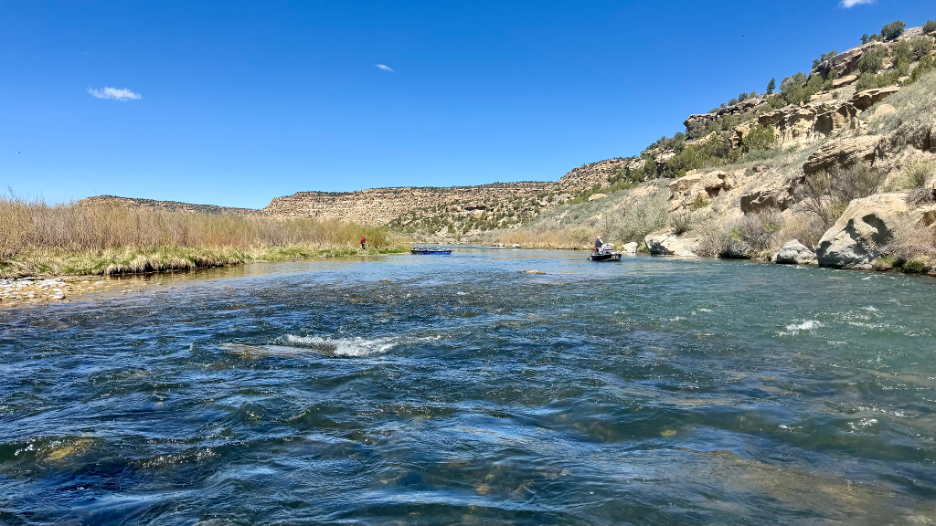Road Trips: New Mexico’s San Juan River

The New Mexico Department of Game and Fish has dubbed the San Juan River below the Navajo Dam, a “Red Chile Water” in celebration of the red, green, and other chiles that are a staple of life in the state.
Catchy title…but for me, I just call it: “Awesome.”
I recently hit the river for a quick two-day float for trout with a fishing buddy; the impression that I left with–and the one that I want to pass onto you is: Get ready for some salmonid studs on teeny-tiny flies.
I’m talking regular hook-ups battling mid-teens-inched rainbow and or brown trout armed with a 5-weight, 6X-7X tippet, and #20-#24 flies. You get what I’m angling (pun intended) at, right?!
We’re talking the NFL–the National Fishing League….
Although I consider myself something of a “reel scholar” as an outdoor writer, the feisty fish of the San Juan definitely schooled me on Day One. I had plenty of eats, but lost an incredible number of fish; I don’t think I’ve ever lost so many fish in a single day.
The equipment was good, the guide was good, the flies were good, the conditions were good, the river was good, but I wasn’t good.
But rather than dwell on my angling shortcomings, which were thankfully overcome on Day Two with some deep reflection, intense prayer, and divine intervention, let me give you a couple of reasons you may want to wet a line in the San Juan.
An Iconic Fishery

The San Juan River below the Navajo Dam in northwestern New Mexico is arguably one of the best fly fishing rivers for trout in the United States. It makes all the lists of top trout waters–repeatedly–and understandably so.
The fishery is fantastico.
Interestingly, this cold water trout fishery came into existence after the dam was built in the early 1960s and the river was stocked with rainbow, brown, and cutthroat trout, some of which now naturally reproduce.
(Cutties are in the river, but aren’t common.)
Beyond the waterway itself, the high-desert landscape it runs through is also stunning. While you’ll pay a price for looking away from a nymphing indicator or dry fly to peek at the passing scenery, it’s hard not to.
I definitely missed several hook-sets gawking at the scenery.
The bottom-release of water from Navajo Dam maintains stable, cold water temperatures ideal for trout. This consistency supports year-round trout fishing with less seasonal variability than other waterways.
The water is also super clear, offering sensational sight-fishing.
Of course, tailwaters can be tough. A slow flow due to a mild gradient can allow fish to closely inspect your fly. Fortunately, the San Juan has a variety of hydraulic habitats including riffles, runs, pools, and back eddies to keep things interesting.

Lots of Insects and Lots of Trout
The San Juan boasts prolific aquatic insect hatches, particularly midges,blue wing olives (BWOs), and tricos. The nutrient-rich water also supports scuds, annelids (worms), and sowbugs, providing ample forage to help fish grow rapidly.
We saw midges and BWOs coming off, and were able to connect with trout on dry flies, dry-dropper rigs, and double nymph set-ups. Nymphing was the way to go–by far. Never threw a streamer the entire two days.
Numbers vary widely, but various sources estimate trout populations between 10,000-25,000 wild and stocked trout per mile in the Special Trout Waters that run for nearly 4-miles below the Navajo Dam.
Even 10K fish per mile is a lot of fish.
New Mexico Game and Fish has claimed that there are as many as 90,000 trout in this 4-mile Quality Waters stretch. Thanks to good conditions, trout routinely reach sizes of 14–18 inches, with trophy fish pushing 20+ inches.
So when you lose that “personal best” fish, it’s good to know there’s another swimming nearby. And another. And another. Like a good public transportation system, there’s always another one coming along.

Selective Trout
But the San Juan isn’t completely fly fishing heaven on Earth.
Due to its celebrated status, the river sees its share of pressure. The Texas Hole below the dam off the ramp is (in)famous for its drift boat traffic jams. That said: anglers and guides play nice; there’s an established traffic pattern and plenty of fish to go around.
Not surprisingly, the trout are also educated. I joked with our guide that the trout knew not only the fly patterns, but also who tied them as well as where and at what time of day they were tied. Presentation and mending skills will affect netted fish numbers.
It can be challenging–as I found out on Day One.
But while a little technical, the San Juan is also richly rewarding. Landing a big, grumpy trout on an itty-bitty fly attached to thread-thin tippet in the current anywhere can be tough–but successfully boating a San Juan salmonid slab is a high five-worthy testament to your fly fishing skills and finesse.
Not Lefty Kreh?
No worries: I saw plenty of (what I perceived to be) newbies/novices catching big fish. Indeed, though an experienced angler myself, I believe I came away a better fly fisher from tangling with the San Juan’s gnarly trout.
The San Juan River offers a unique combination of high trout density, large fish, year-round fishability, and scenic high-desert surroundings, making it a bucket-list destination for fly anglers across the country–even the world.
It’s no wonder New Mexico is called the “Land of Enchantment.”
_____________________
Dr. Peter Brookes is an award-winning outdoor writer for Brookes Outdoors from Virginia. Connect at BrookesOutdoors@aol.com
Have a fly fishing question you’d like answered? Drop us a line at info@darkskskiesflyfishing.com! If we use your question in a blog post or in the newsletter, we’ll send you a FREE fly box with a dozen of our favorite nymphs and dry flies!

